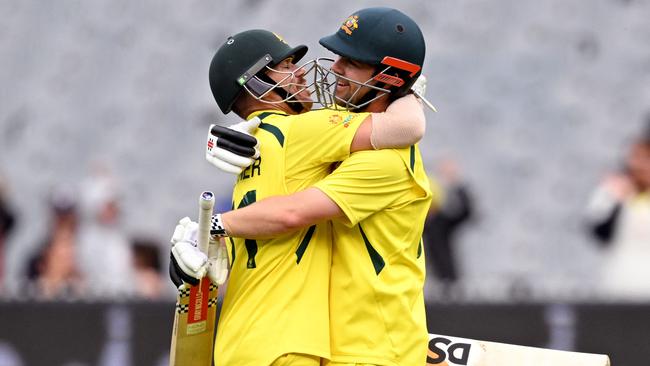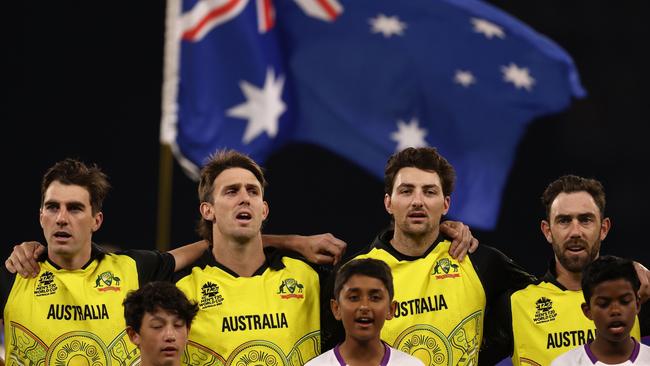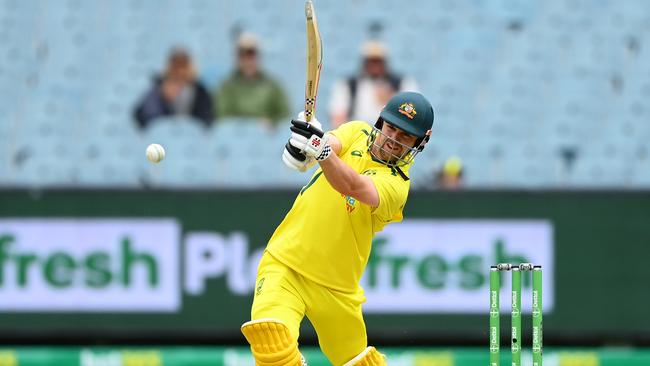Cricket’s new format T10 sparks fears ODIs and Tests could be killed off
T20s, T10s, T5s? Longer-format cricket is no longer the priority, with the crash and bash of shorter versions of the sport becoming its No. 1 income driver, writes David Riccio.

Cricket
Don't miss out on the headlines from Cricket. Followed categories will be added to My News.
Kerry Packer would be upset.
That’s what those closest to the late media tycoon said down the phone line, last Friday
“No, in fact he‘d be p***ed off and gutted,’’ one of his closest affiliates said.
“Kerry was a huge influence on the rise of 50-over cricket and it’s pretty clear which way it’s heading.’’
Packer liked all sports, but his two loves were cricket and rugby league.
South Sydney fans claim the former billionaire’s heart was all cardinal and myrtle.
Eastern Suburbs supporters love nothing more than to agitate their neighbours by proposing, why it was then, Packer was watching the Roosters in the years prior to his passing in 2005.
To the punters, cricket will always be his legacy though.
From inside his office, Packer would watch every ball of a Test match and he was a huge fan of cricket’s 50-over one-day format.
The latter is never more obvious than how he famously changed cricket forever by launching the World Series of Cricket between 1977 and 1979.
The “Packer revolution” began when the cricket-loving businessman wanted to show the sport on his commercial television station Channel 9.
In 1976, he tabled a $1.5 million, three-year offer to the Australian Cricket Board (ACB) for the exclusive TV rights of cricket in Australia.
According to those inside the negotiations, when Packer put forward his offer, he said: “There is a little bit of the whore in all of us, gentlemen. What is your price?”
Former Cricket Australia chairman Bob Merriman said on his inauguration: “I think the two greatest influences in the last 100 years of Australian cricket have been Sir Donald Bradman and Kerry Packer.”

Unfortunately though, like Packer, as grim as it sounds, both the 50-over one-day format and eventually Test cricket, are also fading towards the wicket in the sky.
Answering how they both can be saved from obscurity, is a conversation smarter minds could spend all summer nagging about, and still fail to reach a resolution.
In short, cricket has drifted away from being a sport and sidled into the lane of entertainment with a hand stretched out to the highest bidder.
T20 and soon T10 and perhaps T5, have become the sport’s priorities as TV ratings and rich IPL clubs dictate playing schedules and seasons, which are eating into the scheduling of ODI and Test matches, as well as the availability and quality of talent.
What’s frightening for the purists is, Merriman warned the game against doing exactly that 15-years ago.
“Let’s not in any way diminish Test cricket and 50-over cricket. They are the backbone of our cricket,’’ Merriman said in a Nine interview in 2007.
“Twenty20 has to find its own niche. Whether it’s in the early-January period domestically or internationally, whether we play one game like we have in the past two years or maybe two years, I don’t know.
“That is something that has to be worked on.
“But no way should we put Test cricket or 50-over games at risk of competing with Twenty20.”
Of the two, Test cricket may have a few more years of playtime left.
But there’s no guarantees, with cricket administrators across the world favouring the financial returns of T20 cricket, over tradition.
Last week is proof of the scant regard for ODI cricket, with the scheduling of a meaningless match last Tuesday.
Australia’s third and final match against England took place in front of the lowest crowd for an ODI involving Australia at the MCG.
An official crowd of 10,046 was posted.

The scheduling of the ODI, just a few days after the T20 World Cup, appeared tokenistic - and that’s exactly how fans saw it.
The other problem for the future of the 50-over game is the rise and rise of T20 League competitions across the world.
Their schedules are crushing the 50-over game and it’s impossible not to fear that Test cricket will follow.
Rich T20 franchises, led by $10 million-plus teams in the Indian Premier League, pay their way to prominence by using the world’s best players and restricting their availability with the amount of matches they can play in other formats, when you also factor in rest and recovery.
From next year, there will be 13 different principal T20 Leagues across the world.
The rise of T20 cricket has also diluted the development of Australia’s next first-class batsmen.
If the focus is T20 and next T10, where are the long-form batsmen coming from?
A quick glance through the Sheffield Shield results and it‘s the same old faces leading the charge; Peter Handscomb and Matthew Wade.
Then there’s cricket’s greatest danger.
Confusing fans and alienating them through an inability to form a bond and attachment to players, who have become chameleons, instead of heroes.
The current FIFA World Cup is football’s pinnacle trophy.
Football, the most popular sport in the world, played by over 250 million people, has only one World Cup. Rugby Union only has one World Cup.
Swimming has one World Championships.
Even Rugby League only has one World Cup.
Cricket? It has the equivalent of three, with the recently adopted ICC World Test Championship and if T10 takes off, it could quickly become four different World Cups.
Something is about to give.





